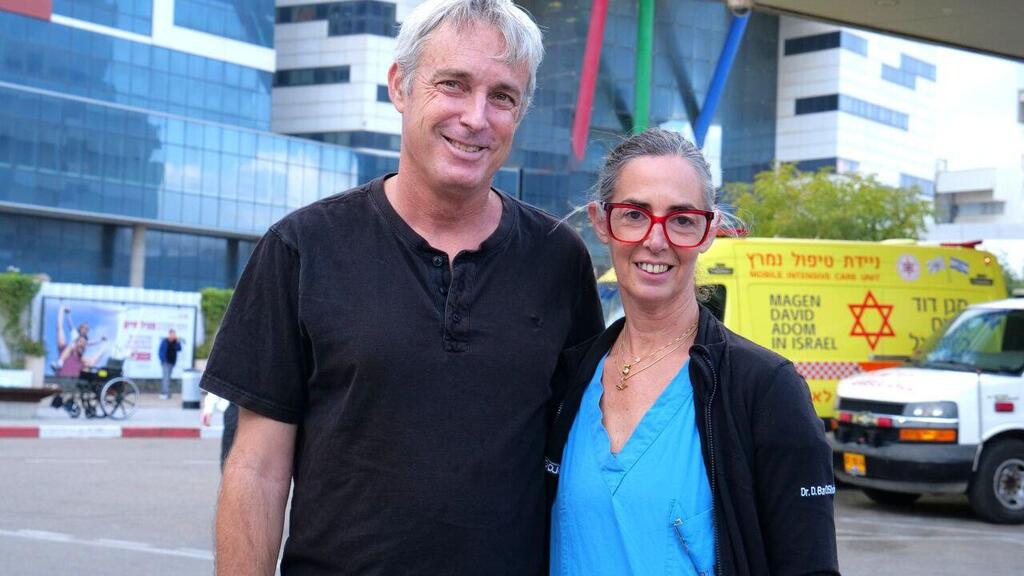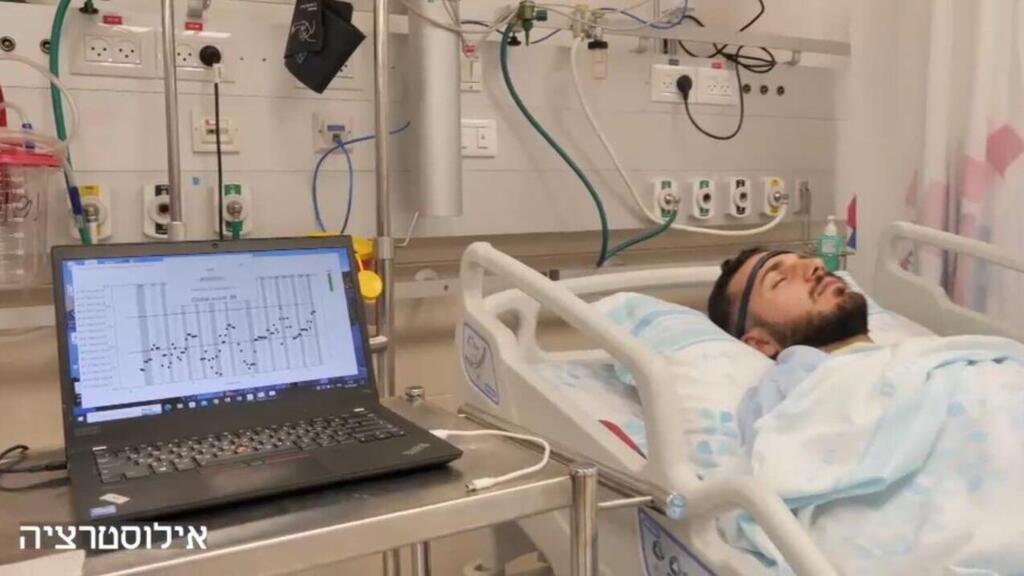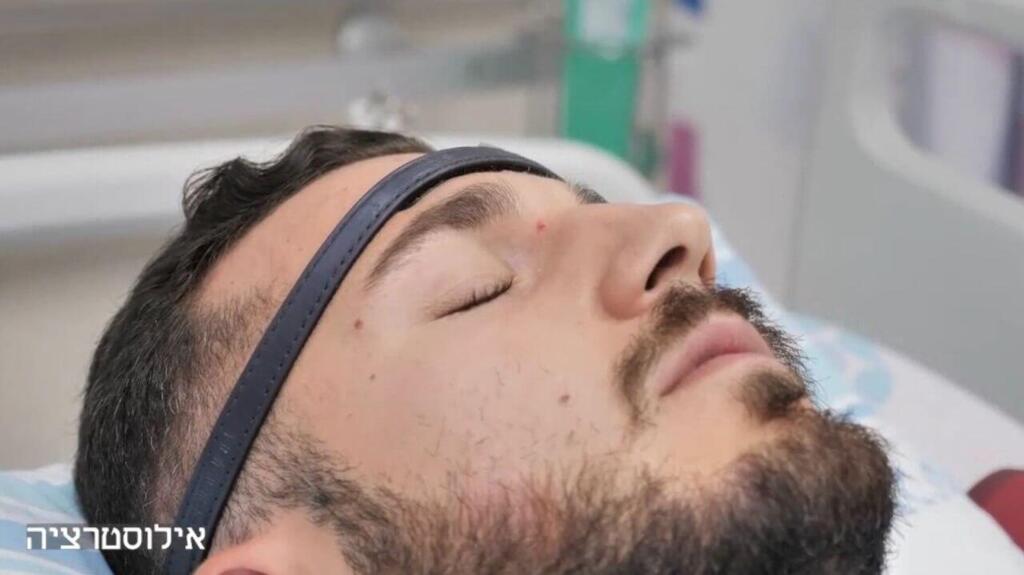Getting your Trinity Audio player ready...
An IDF soldier unconscious after suffering severe head injuries in the fighting in southern Lebanon, began communicating with his doctors and even asked for a drink of water after being unconscious for a month.
The exciting development at the Rambam Heath Care Campus last month, was due to a new technology developed by Dr. Goded Shahaf, principal investigator of Rambam Health Care Campus’s Applied Neurophysiology Laboratory, which enables patients who have been unresponsive due to injury or illness, to respond to and relay messages using blinking.
Shahaf who has been collaborating with his wife, Dr. Danan Baron Shahaf, developed the technology alongside the Reut Rehabilitation Hospital. The tool was designed to facilitate communication with unconscious patients," he says.
The technology called EyeCon System uses electrodes wrapped around the patient's hand that allow the reception of brain waves (EEG) and evaluation of the state of eye muscle contractions.
The system includes computer software for advanced processing of the EEG waves to determine where in the brain the patient "is awake" and pull him toward further consciousness.
4 View gallery


Dr. Dana Baron Shahaf demostrates EyeCon treatment
(Photo: Rambam Health Care Campus)
“The aim of the technology, which is based on advanced EEG wave algorithms, is to identify the patient’s level of awareness and to advance them step by step toward regaining consciousness. We use it with patients who are in a chronic state of unresponsiveness for 5, 10, or 15 years. We also use it for patients experiencing a lack of communication with reduced levels of consciousness, as well as intensive care patients, in order to promote communication with them,” explains Dr. Baron Shahaf."
“Using this technology, we can begin to teach patients step by step how to use their eyes to communicate, each according to their ability. A patient who was unable to move, is suddenly able to signal that they want to listen to music, watch television, or go outside—it completely changes their world.”
The EyeCon technology effectively demonstrates the results of a recent study published in the leading New England Journal of Medicine, which examined a sample of 353 unresponsive patients in vegetative or comatose states across six medical centers worldwide.
Using standard EEG and MRI technologies the study sought to determine the number of conscious patients. They found that some 25% of the patients demonstrated distinct patterns of consciousness. The study also suggested that repeated testing over time would significantly increase the number of patients demonstrating patterns of consciousness.
This study corroborated prior well-known smaller-scale studies, which found that a significant percentage of these patients, often hospitalized for extended periods, have a higher level of consciousness than indicated during their clinical diagnosis, but are unable to communicate with their surroundings.
The first stage of treatment measures a patient’s attention level. Next, the patient listens to music they enjoyed prior to their injury. After 30 seconds, the music stops. Guided by a family member, the patient is instructed to blink to restart the music. The software is repeatedly activated automatically, allowing the patient to practice the most basic communication—to indicate “yes” by blinking.
By avoiding blinking in response to aversive auditory stimuli (noise), the patient also learns to indicate 'no.' Through these responses of blinking and avoiding blinking, the patient undergoes cognitive assessments and progresses to using a communication board where they can choose messages to express what they want at varying levels of complexity. As mentioned, the system is designed to be used by the family, allowing them to take the lead in the rehabilitation process rather than a passive role. Thus, the system allows the patient to practice communicating independently without an occupational therapist or a speech pathologist at their bedside.
Get the Ynetnews app on your smartphone: Google Play: https://bit.ly/4eJ37pE | Apple App Store: https://bit.ly/3ZL7iNv
The EEG provides immediate metrics, allowing caregivers to determine whether the patient is engaged in the process, experiencing pain, or suffering from an acute undetected illness that could hinder their training. According to the results, the process can be fine-tuned.
“We give families a lifeline," Dr. Shahaf says. "Many patients who were destined for nursing care without significant recovery are now moving towards a path of substantial rehabilitation and the ability to communicate.”




